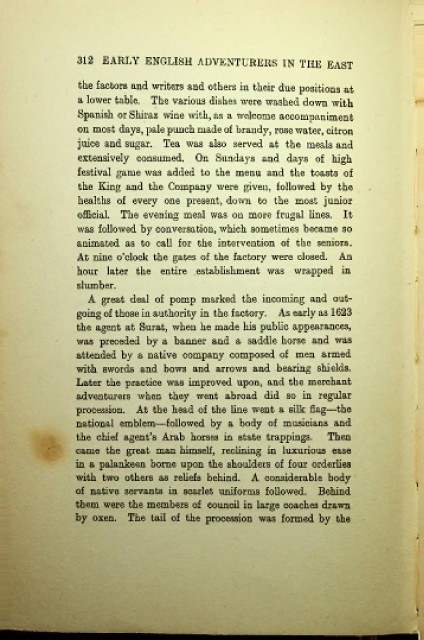Page 312 - Early English Adventurers in the Middle East_Neat
P. 312
312 EARLY ENGLISH ADVENTURERS IN THE EAST
the factors and writers and others in their due positions at
a lower table. The various dishes were washed down with 1
Spanish or Shiraz wine with, as a welcome accompaniment
on most days, pale punch made of brandy, rose water, citron
juice and sugar. Tea was also served at the meals and
;
extensively consumed. On Sundays and days of high
festival game was added to the menu and the toasts of
the King and the Company were given, followed by the
healths of every one present, down to the most junior
official. The evening meal was on more frugal lines. It
was followed by conversation, which sometimes became so
animated as to call for the intervention of the seniors.
At nine o’clock the gates of the factory were closed. An
hour later the entire establishment was wrapped in
slumber.
A great deal of pomp marked the incoming and out
going of those in authority in the factory. As early as 1623
the agent at Surat, when he made his public appearances,
was preceded by a banner and a saddle horse and was
attended by a native company composed of men armed
with swords and bows and arrows and bearing shields.
Later the practice was improved upon, and the merchant
adventurers when they went abroad did so in regular
procession. At the head of the line went a silk flag—the
national emblem—followed by a body of musicians and
the chief agent’s Arab horses in state trappings. Then
came the great man himself, reclining in luxurious ease
in a palankeen borne upon the shoulders of four orderlies
with two others as reliefs behind. A considerable body
of native servants in scarlet uniforms followed. Behind
them were the members of council in large coaches drawn
by oxen. The tail of the procession was formed by the

